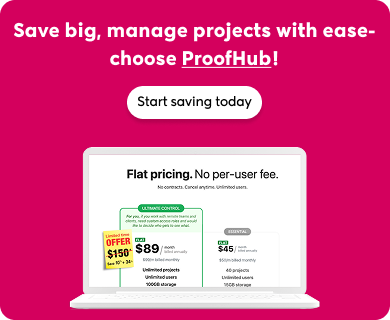A staggering 63% of companies have already implemented a stakeholder engagement strategy.
Is it time for your organization to join them?
After all, a stakeholder engagement plan acts as a strategic manual that provides an in-depth insight into all your stakeholders’ interests, power, and influence.
And being a project manager, you can’t afford to overlook this aspect while keeping other factors synchronized. No matter the stakeholders’ motivations and roles, tailoring your communication style accordingly is necessary to ensure guaranteed project success.
Below, we’ll introduce you to the stakeholder engagement plan, its importance, and its key components. We’ll also walk you through the five essential steps to help you draft your plan.
But before we proceed any further, let’s define who the stakeholders are.
What is a stakeholder?
A stakeholder is an individual, group, or organization with a stake in your organization. Stakeholders can either be members of your organization or someone external to it. They directly or indirectly impact the decision-making activities and influence your business operations.
According to the Project Management Institute (PMI®), 1996, stakeholders are formally defined as: “individuals and organizations who are actively involved in the project, or whose interests may be positively or negatively affected as a result of project execution or successful project completion.”
The different types of stakeholders include –
- Internal stakeholders may include employees, functional managers, team leads, department heads, project managers, and board members.
- External stakeholders may include clients, suppliers, customers, company partners, and regulators.
- Financial stakeholders may include shareholders, creditors, or investors.
Note: All stakeholders can be the general public, but not all of the general public can be a stakeholder. Despite being aware or unaware of your organization, the general public lacks interest in your success narrative.
What is a stakeholder engagement plan and why is it important?
A stakeholder engagement plan (SEP) – also known as a stakeholder communication plan or a stakeholder management plan, is an essential component of an organization’s project management plan.
This formal document enlists all your key stakeholders and the extent to which they will influence and be involved in the project. It also outlines various interaction methods, communication platforms, timings of outreach, and the depth of information sharing.
The plan should ideally be created before the beginning of a project. Also, the basic nature of this document is dynamic. Hence, it remains open to adaptation throughout the entire project lifecycle.
Here are a few reasons that highlight why drafting a stakeholder engagement action plan is important:
- It keeps your stakeholders updated with the project’s course, and the plan ensures everyone is on the same page.
- Establishing clear communication pathways ensures everyone is well-informed and engaged throughout the project.
- Early identification and mitigation of risks and conflicts associated with stakeholder groups minimize disruptions. This is one of the potential reasons why projects fail.
- A strong SEP garners more trust, confidence, and buy-in for your organization.
- Keeping stakeholder expectations and generated output produced at each phase aligned ensures impactful results.
- A well-executed stakeholder engagement plan fosters trust and confidence between team members and stakeholders, fostering collaboration and mutual respect.
Major components of the stakeholder engagement plan
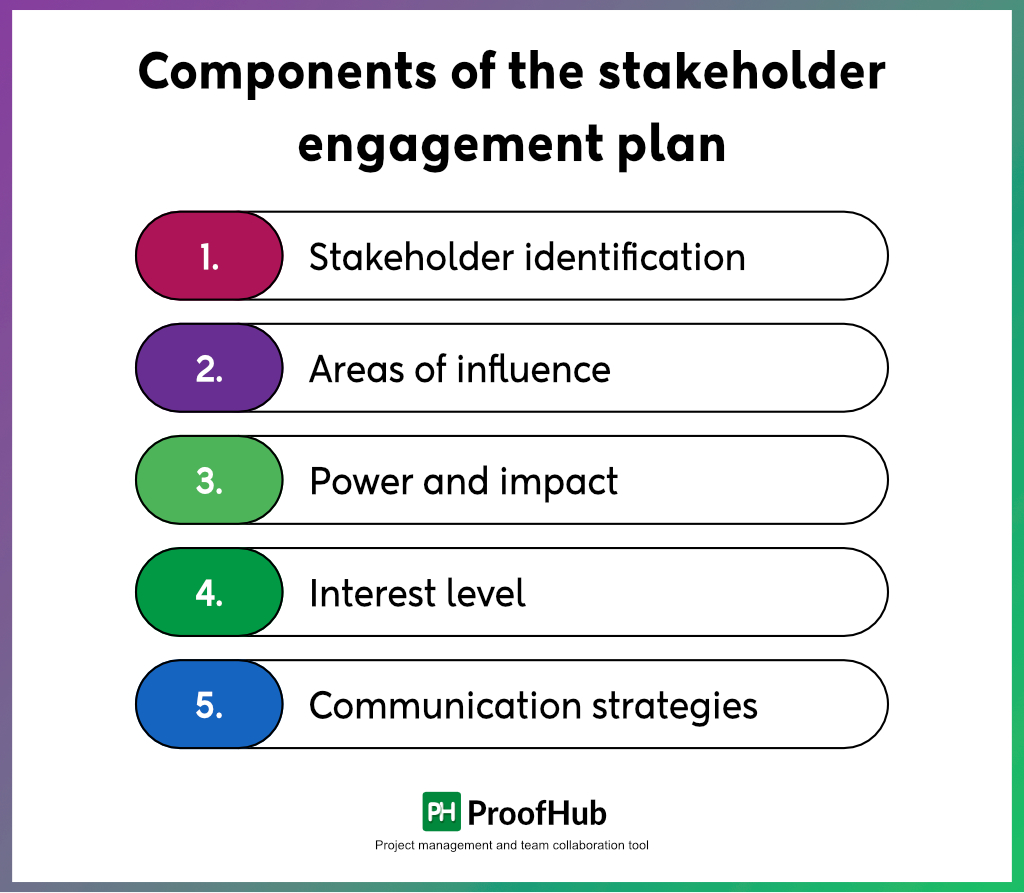
While creating an action plan for stakeholder engagement is subjective, some basic components are universal.
Here is a quick rundown of the major SEP components that ensure project sustainability:
1. Stakeholder identification
First and foremost, start listing all your stakeholders. After thorough analysis, make a list or a register of all your project stakeholders.
Be it internal or external, smaller or larger, powerful or less, clearly state every stakeholder information. The rationale behind the evaluation is to ensure their concerns and perspectives are respected and addressed.
2. Areas of influence
Once the stakeholder register is ready, rate down stakeholders’ influential levels on the project and organization. Not just that, you also need to identify the areas that their involvement will most impact.
The scale of the stakeholder influence ranges from – very high to very low. Where High, Medium, and Low levels are the other standardized categories as explained above.
3. Power and impact
The next thing to consider is the power and impact a stakeholder can exert. Both these factors are in correlation with each other. Where power defines the ability to influence a project, the extent to which the project may affect or be affected by each stakeholder is known as impact.
By understanding these two components, organizations can strategize their actions accordingly.
4. Interest level
You should conduct the next segregation based on the interest and engagement levels. You can utilize this information to tailor your approach based on their preferences.
As stated above, the five levels of stakeholder engagement include Leaders, Contributors, Neutral, Resistant, and Unaware. The first four mentioned stakeholders are generally aware of the project’s impact, but their participation varies. However, Unaware stakeholders show little to no involvement.
5. Communication strategies
The final component is to craft an engagement plan for stakeholders. Remember, it is not a one-size-fits-all solution. This documents the communication channels the company aims to use, the frequency of those communications, and the information that will be shared.
And all these factors may vary for every stakeholder involved. Putting all these elements together, you can effectively manage their expectations while keeping them engaged.
Read more: Streamline your stakeholders’ communication using the best 17 team communication tools for businesses
Steps to create a stakeholder engagement plan
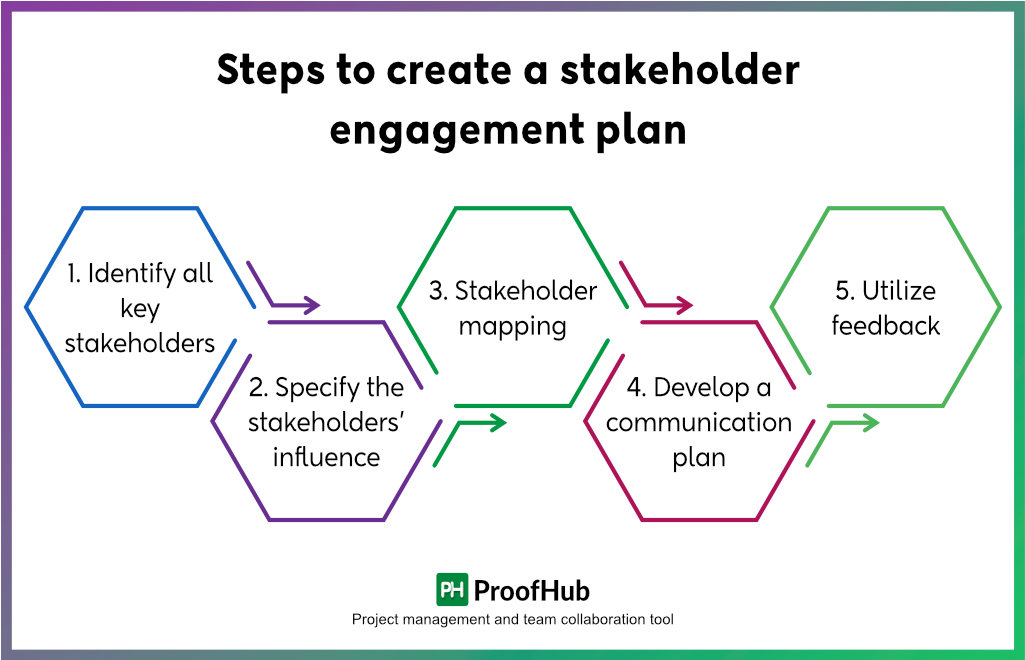
Developing a systematic stakeholder engagement plan ahead of project kickoff is necessary to ensure they stay informed of all the developments.
Here are the five key steps to create a plan in a way that not only engages stakeholders but increases the likelihood of project success.
1. Identify all key stakeholders
Creating a stakeholder engagement plan is incomplete without identifying the prime stakeholders. No matter how easy it may sound, the task is complex. Why? Because there is a high chance that you can unintentionally compromise the comprehensiveness of the stakeholder list.
So, the first step to increase stakeholder engagement is listing all the stakeholders. And for better clarity and transparency, you should divide them into interest groups.
The 5 different phases of stakeholder engagement or interest are:
- Leaders: These people have a strong influence on project development and are fully aware of the project’s impact.
- Contributors: These people show strong support for project development and are aware of the project’s impact.
- Neutral: These people neither resist nor support the project but are aware of its impact.
- Resistant: These people show resistance to change but are mindful of project outcomes.
- Unaware: These people are clueless about the project’s impact, so participation isn’t even a thing here.
You should also define what specific roles they will play in the project. Along with how the project will impact them.
2. Specify the stakeholders’ influence
Once you are done identifying the stakeholder roles and engagement levels, the next step is to specify their scope of influence.
The basic goal is to identify and understand stakeholders’ motives and expectations from the project. Also, what will be their areas of involvement, and to what extent will they be invested in that zone?
Putting yourself in stakeholders’ shoes is a great practice to grasp their motivation behind the involvement. When you keep check of all this stuff, you lay the foundation for successful project management.
The 5 different parameters of stakeholder influence are-
- Very high: A stakeholder with significant influence and ultimate control over decisions.
- High: A stakeholder with a major influence on project actions and decisions.
- Medium: A stakeholder with moderate influence but a significant part of the decision-making process.
- Low: A stakeholder with limited influence, not substantial enough to take into consideration
- Very low: A stakeholder with minimal engagement but no control over decisions.
3. Stakeholder mapping
The third stage of creating your SEP is to map out your stakeholders. You can visualize the stakeholder analysis process using the Power/Interest matrix by plotting all the involved stakeholders based on the two factors that we have discussed above-
- Interest
- Influence

The goal is to figure out what actions should be performed to prioritize the stakeholders. It presents you with a clear picture of where you need to invest your efforts.
For instance, if you keep feeding in whole-level knowledge and updates to people with low interest and take for granted high-power people, you are just banging your head against a wall. No fruitful results at all.
The four major categories include –
- High power – High interest: These are the most influential stakeholders with the biggest impact. These people usually belong to the “Leaders” and “Contributors” categories. You should ensure keeping them satisfied while managing their expectations.
- High power – Low Interest: These stakeholders are as influential as the above category. You should keep them in the loop about all the major project updates despite them being uninterested. Why? Because they hold the power. And you need to be cautious and strategic when dealing with them.
- Low power – High interest: Stakeholders of this category belong to the “Neutral” or “resistant” category. Although they do not hold much power, you need to keep them adequately informed and feel involved. Because of being ignored, they can even resist change.
- Low power – low interest: Unaware stakeholders usually fall in this category. You should not waste your time and efforts in contacting and communicating with them. But by sending them occasional updates, you can keep the door open for them to take an interest in the future.
4. Develop a communication plan
After a thorough stakeholder mapping, you should immediately start working on building your communication strategy. Your engagement plan should provide a clear outline of when, how, and how much you will communicate with your stakeholders.
With this strategic approach, you will have ultimate control over how you want to update your stakeholders. So that stakeholders from each quadrant have access to only relevant information.
To do this best, put all your project info in one place, like project management software. Stakeholders can use this tool to see how the project is going and check the overall timeline easily.
Different communication channels that can serve the need are:
- Virtual meetings
- Email communications
- Real-time chats
- In-person visits
- Conferences
Also, how many times will they be expecting planned interactions? It is another trait that should not be compromised at all.
5. Utilize feedback and fine-tune your strategy
Feedback provides insights into what is going right and what areas need modifications for better performance. These changes can come to the surface only when you leave a space for feedback intake. You need to actively practice this approach during the entire project lifecycle to prevent your communication strategy from derailing.
Now, these modifications may arise due to numerous reasons – be it unexpected events or stakeholders’ behavior. The key is to act upon their suggestions or concerns for quick resolution promptly. And that can only happen when you stay in sync with the evolving stakeholder needs.
Bonus tips for stakeholder engagement plan
- Promote transparency and consistency: Provide regular updates and promote clear communication across all the stakeholder quadrants.
- Listen actively: Be all ears when listening to stakeholders’ feedback, concerns, and suggestions.
- Stay flexible: Remain adaptable to changing stakeholder needs and priorities for continued stakeholder satisfaction.
- Leverage technology: Make use of digital tools to streamline your operations, eliminating inefficiencies.
- Continuously improve: Regularly review, gather feedback, and assess changing project requirements to update your plan based on evolving needs.
How can ProofHub help you create a stakeholder engagement plan?
ProofHub assists in creating a comprehensive stakeholder engagement plan by providing –
- Seamless communication: ProofHub helps stakeholders stay connected and collaborate effectively by eliminating the need for sending countless emails. It provides robust features, including built-in chat, discussions, announcements, and task updates to create a centralized space and keep everyone informed.
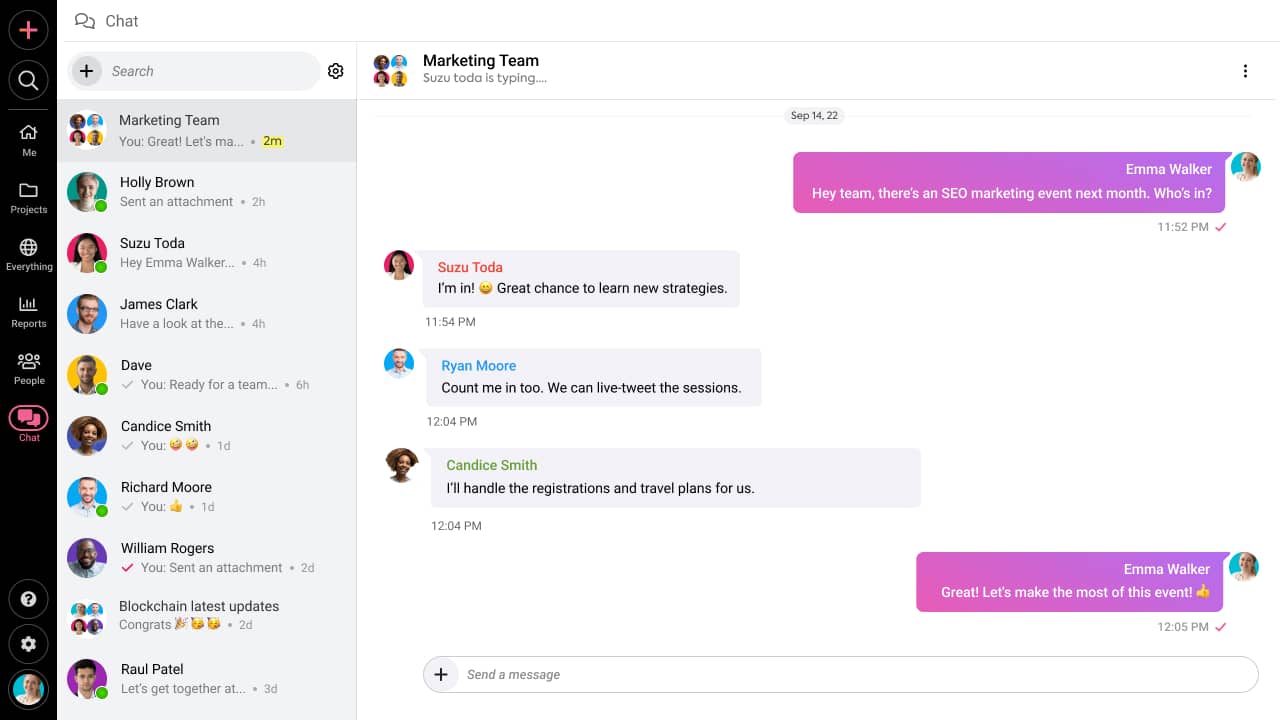
- Real-time visibility: With ProofHub’s comprehensive dashboard and reports, stakeholders can get real-time insights into project progress, milestones, and roadblocks. They can use this information to stay updated and informed. It’s an ideal tool to get a bird’s eye view of the project’s overall health.
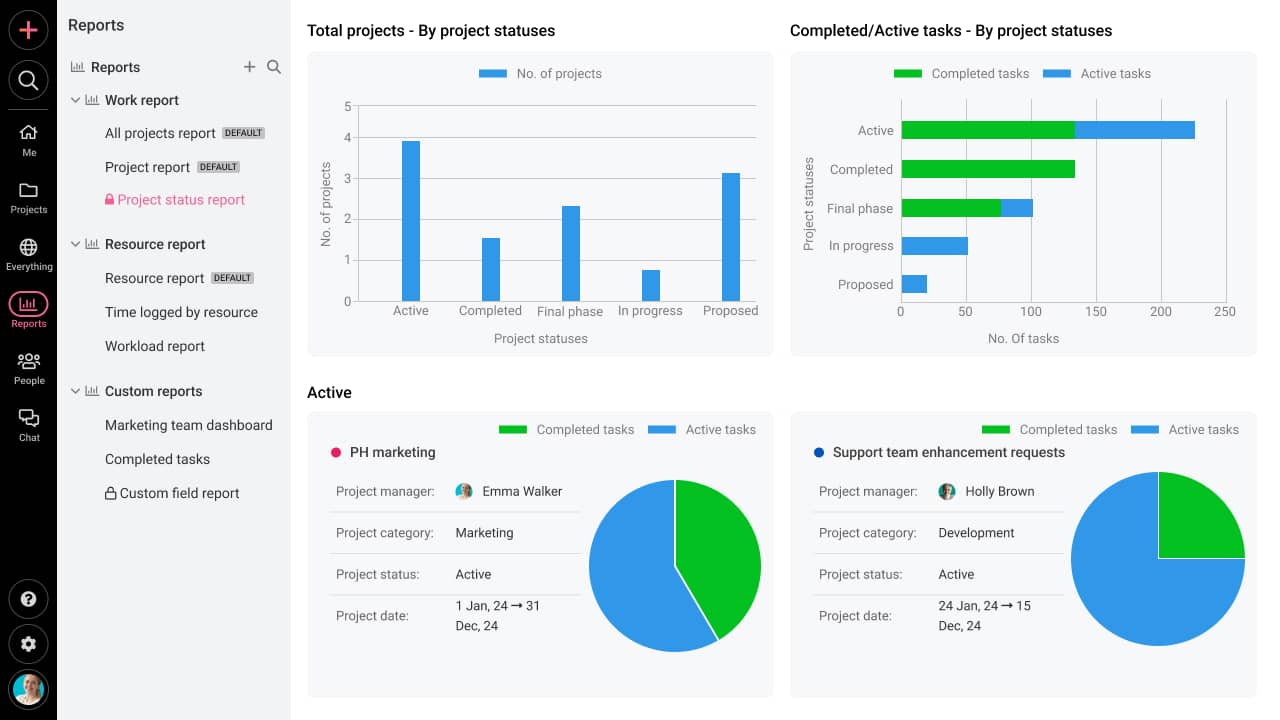
- Improved collaboration: The intuitive platform brings together all your stakeholders on the same page with shared task lists, calendars, and files. Additionally, all stakeholders can receive updates on all activities through notifications, including app, email, desktop, and mobile notifications, even when on the go.
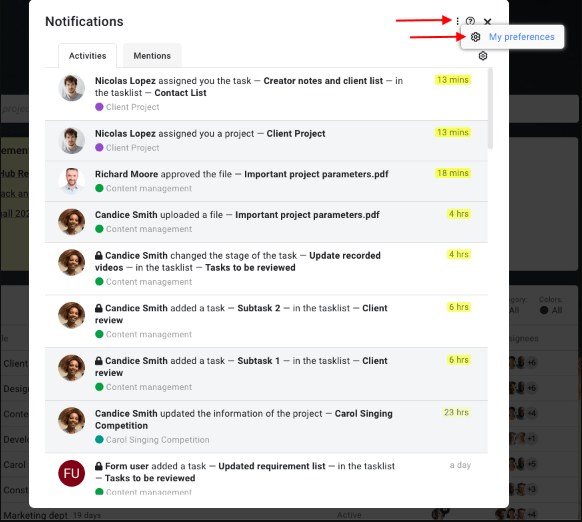
- Quick approvals and feedback: ProofHub provides a dedicated comment section to provide feedback directly on tasks and documents. Stakeholders can even annotate files using markup tools to highlight specific areas of modification. Also, with its external request forms, one can easily track client requests, support teams, and queries.
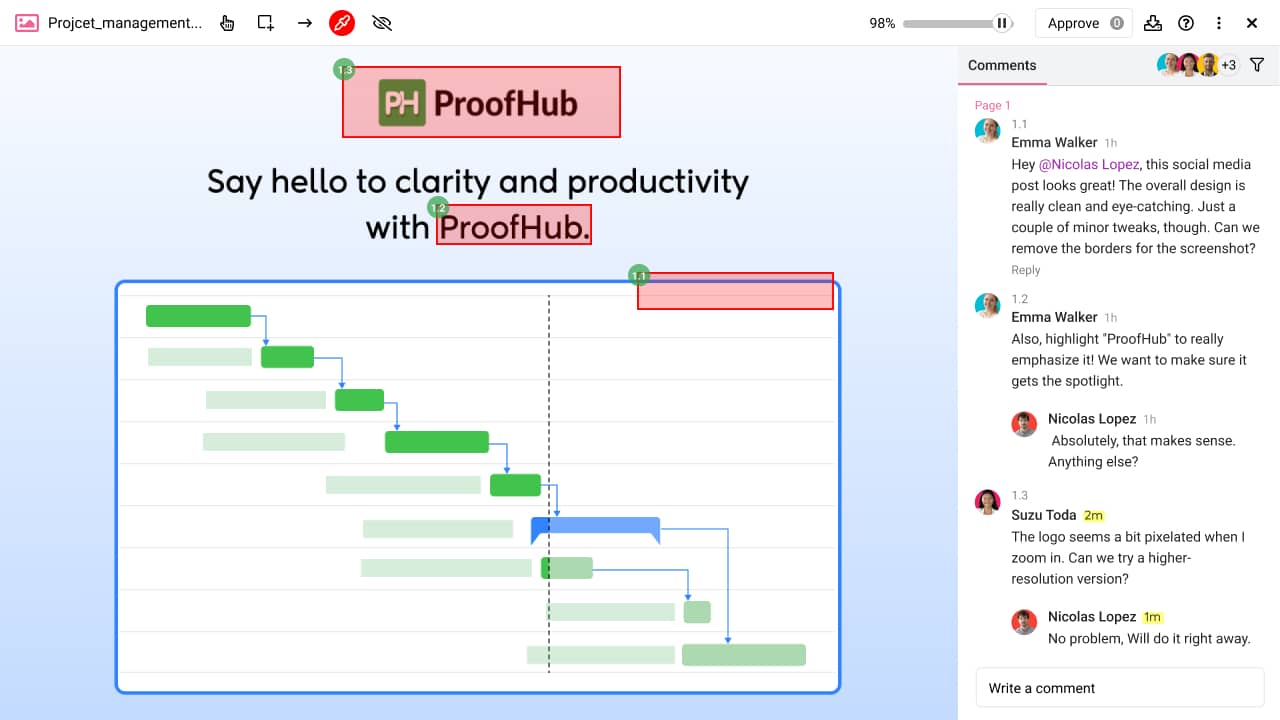
- User roles and permissions: With ProofHub’s custom roles and permissions feature set, you can define various stakeholder roles. This allows you to even add and manage access to the information, ensuring stakeholders only access the information relevant to their role. This ensures sensitive data is secured from unauthorized eyes.
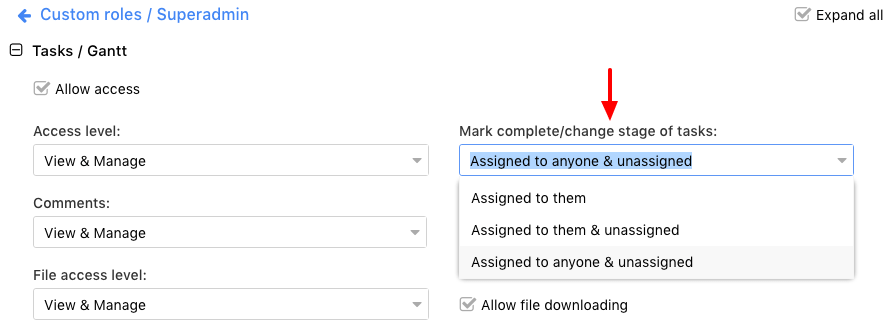
Read more: Build strong relationships with your stakeholders and bring them on the same page with the best online collaboration tools.
ProofHub – your ultimate stakeholder engagement planning solution
A stakeholder engagement plan is an integral component of a project planning strategy. Because setting a stakeholder communication framework yields some invaluable results.
ProofHub gives you the flexibility to customize your stakeholder communication strategy. It allows you to develop a tailored plan and implement it while keeping your stakeholders updated and engaged.
Not just that, the all-in-one platform centralizes all your business operations by bringing all your projects, tasks, and stakeholders together. So, no more scattered efforts, just streamlined communication.
Keep all your stakeholders connected and informed. Check out ProofHub’s collaboration features and nail your stakeholder engagement plan!
FAQs
What does a stakeholder engagement plan include?
A stakeholder engagement plan enlists various elements –
- List of all the stakeholders
- Area of stakeholder influence
- Stakeholder power and impact
- Stakeholder interest level
- Communication strategies and channels
What are the 5 principles of stakeholder engagement?
The 5 key principles of stakeholder engagement are –
- Early & ongoing engagement
- Setting clear goals
- Building relationships
- Ensuring openness and transparency
- Pursuing inclusivity
What are the 5 levels of stakeholder engagement?
The five levels of stakeholder engagement are –
- Leaders: most significant participators and most influential
- Contributors: significant participators that support project goals
- Neutral: Neither support nor oppose the project
- Resistant: Actively oppose the project’s progress
- Unaware: Neither aware of the project nor its impact
What is the key goal of stakeholder engagement?
The major goal of stakeholder engagement is to achieve project success, ensuring all the relevant parties are informed, involved, and aligned.
What are the three pillars of stakeholder engagement?
The three pillars of stakeholder engagement are –
- Stakeholder identification
- Stakeholder engagement
- Stakeholder participation

